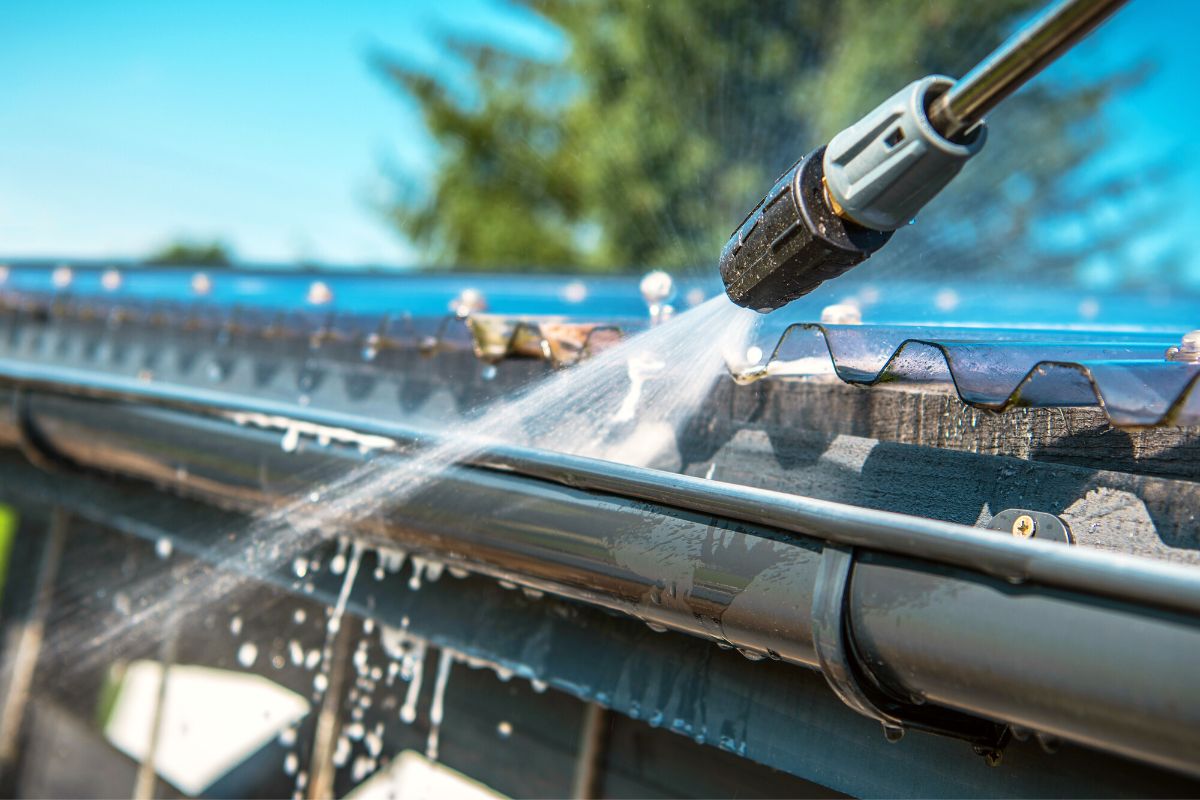Pressure Washing Techniques
If you are like us, you see cleaning as a form of therapy. Something is satisfying about turning a place or surface covered in grime, mould, dirt or grease into something clean and beautiful.
Perhaps the most rewarding satisfaction associated with cleaning is restoring something old and forgotten to its former glory and making it useful once again.
We believe cleaning is an art. To achieve this excellence, you must understand the correct approach to different cleaning tasks and use the proper techniques.
In this post, we will discuss pressure washing techniques. Pressure washing involves using water to clean exterior surfaces such as roofs, walls, patios or decks using a high-pressure hose connected to a pump and nozzle.
Pressure washing can significantly reduce the time needed to clean tricky exterior surfaces and remove stubborn stains such as mould or mildew.
Below are some pressure washing techniques and hacks that will help make your cleaning more effective and give outstanding results.
Soft Washing
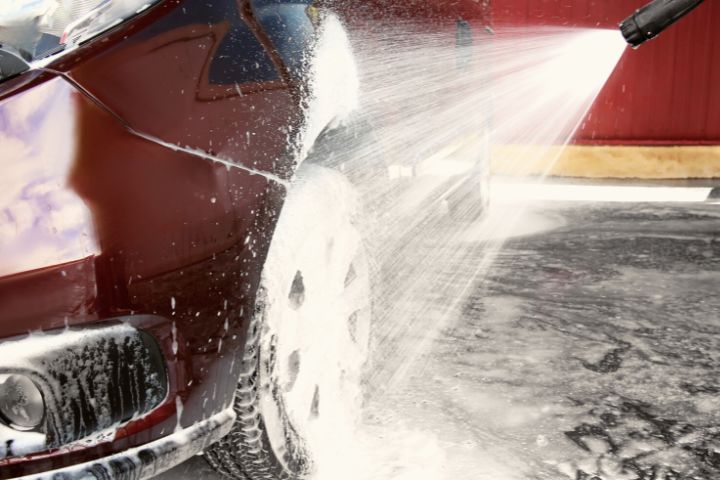
You may be wondering why we have put soft washing as a technique for pressure washing. But you are not alone. Most people do not understand that there is also a gentle approach to pressure washing, and it involves using mild detergents and a low PSI to clean your exterior surfaces.
Typically, homeowners think that a one-size-fits-all approach is the best for pressure washing and that they could just turn up the pressure and blast away all the grime and dirt on their exterior surfaces.
However, doing this on the surface of some items like windows, vinyl sidings, gutters, or even driveways can be devastating and cause damage. They also may end up with streaks and an uneven finish.
Soft washing involves using high-quality mild detergents that are eco-friendly and are less likely to damage your surfaces. In addition, the more delicate application is gentler on your walls and roofs, so they will not end up damaged after cleaning.
A soft wash uses less than 500 PSI for rinsing and cleaning. The pressure washers are fitted with broad spray tips, reducing the pressure point.
The most significant advantage of soft washing is that it does not leave any streaks or scratches on the surface after cleaning. In most cases, it is ideal for cleaning vinyl sidings and stone finishes.
Pressure Washing
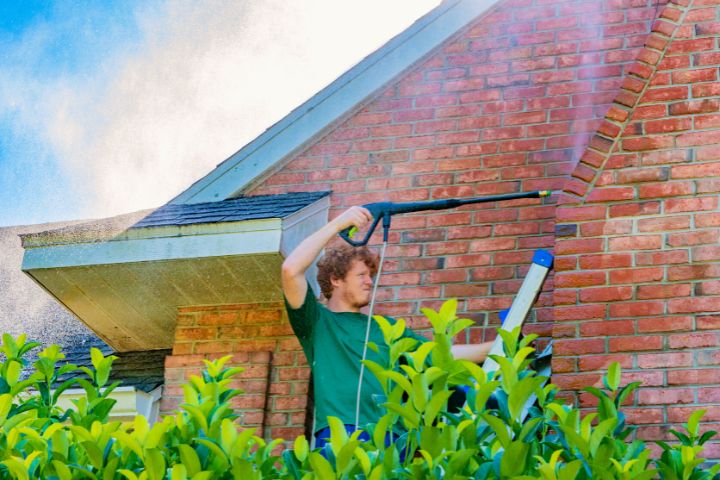
On the other hand, pressure washing uses up to 4,000 PSI to clean tough stains and grime on driveways, walls, patios and decks, and roofs.
A pressure washer is fitted with narrow spray tips that inflate under pressure and force water out forcefully and in a concentrated direction.
This reduces the time and effort required to clean walls and roofs, removes stubborn stains such as mildew and mould, and leaves surfaces sparkling clean.
Power Washing
Power and pressure washing tend to be used interchangeably, but there is a slight difference between these two techniques.
In hot water pressure washing or power washing, the pressure washer uses hot water to clean surfaces and tough stains such as mould and mildew on exterior surfaces such as walls and roofs.
The high water pressure and temperature melt the corrosion and grime on the surface and blast it away. Hot water pressure washing is ideal for removing mildew and mould from brick and stone exteriors and brightening exterior surfaces such as fences, walls, and driveways.
The water’s temperature is the most significant difference between power and pressure washing. Hot water pressure washing uses hot water up to 200 degrees F. On the other hand, pressure washing uses water only up to 140 degrees F.
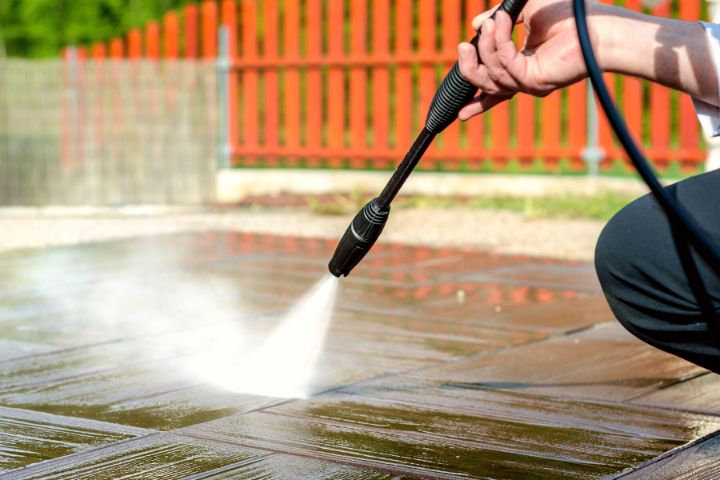
In addition, it is advisable to leave power washing to the professionals because the entire process can be dangerous. You need the appropriate training to handle the machine, and the process, in general, can cause damage to your property if done incorrectly.
Tips for Pressure Washing
Here are some helpful tips for pressure washing:
- Test the power of your pressure washer: Start spraying a few feet away from any object. You should slowly bring the wand up to a distance of 3-4 feet from the surface you are cleaning. Confirm that the surface is clean by wiggling your wand side-to-side a couple of times. You may need to move your nozzle gradually closer to the surface (approximately 1-2 feet) if additional cleaning is necessary. It’s essential to do a gradual cleaning due to the power of pressure washers, which may damage objects if you start too close.
- Spray horizontally: The most effective way to clean vertical surfaces is by spraying horizontally by moving from left to right. The idea is to start from the top all the way to the bottom to prevent streaks and missing spots.
- Avoid using one nozzle for every cleaning task: There are a variety of nozzles available for pressure washers, so you can adjust the spray pattern to meet your needs. Generally, the narrower the spray, the greater the force.
- Using chemicals: You should only use approved chemicals or detergents. Using the wrong chemicals to clean your exterior surfaces can damage them and may lead to health problems for you and your family if inhaled.
Conclusion
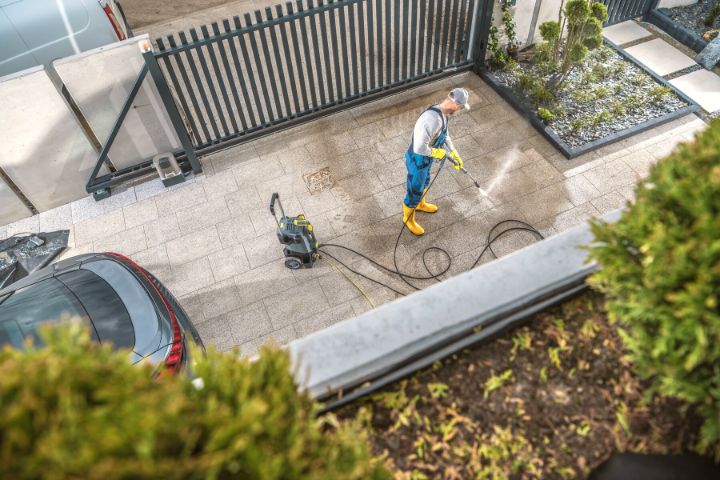
Pressure washing is an efficient way to clean your property’s exterior surfaces thoroughly.
However, it is crucial to choose the right technique and method to clean your exterior surfaces depending on the surface type and the material the surface is made of.
Soft washing is gentle on delicate exterior surfaces and may be the best technique to use for the patio and deck, walls, windows, vinyl sidings, gutters and driveways. But if there are stubborn stains, such as mildew or mould, you may opt for power or pressure washing.
If you have any questions about pressure washing or need a professional’s help cleaning your property, you can contact us at Presha Cleaning. We have helped many people in Australia with their cleaning needs, and we will be happy to help you as well. Contact us for a free no-obligation quote.

